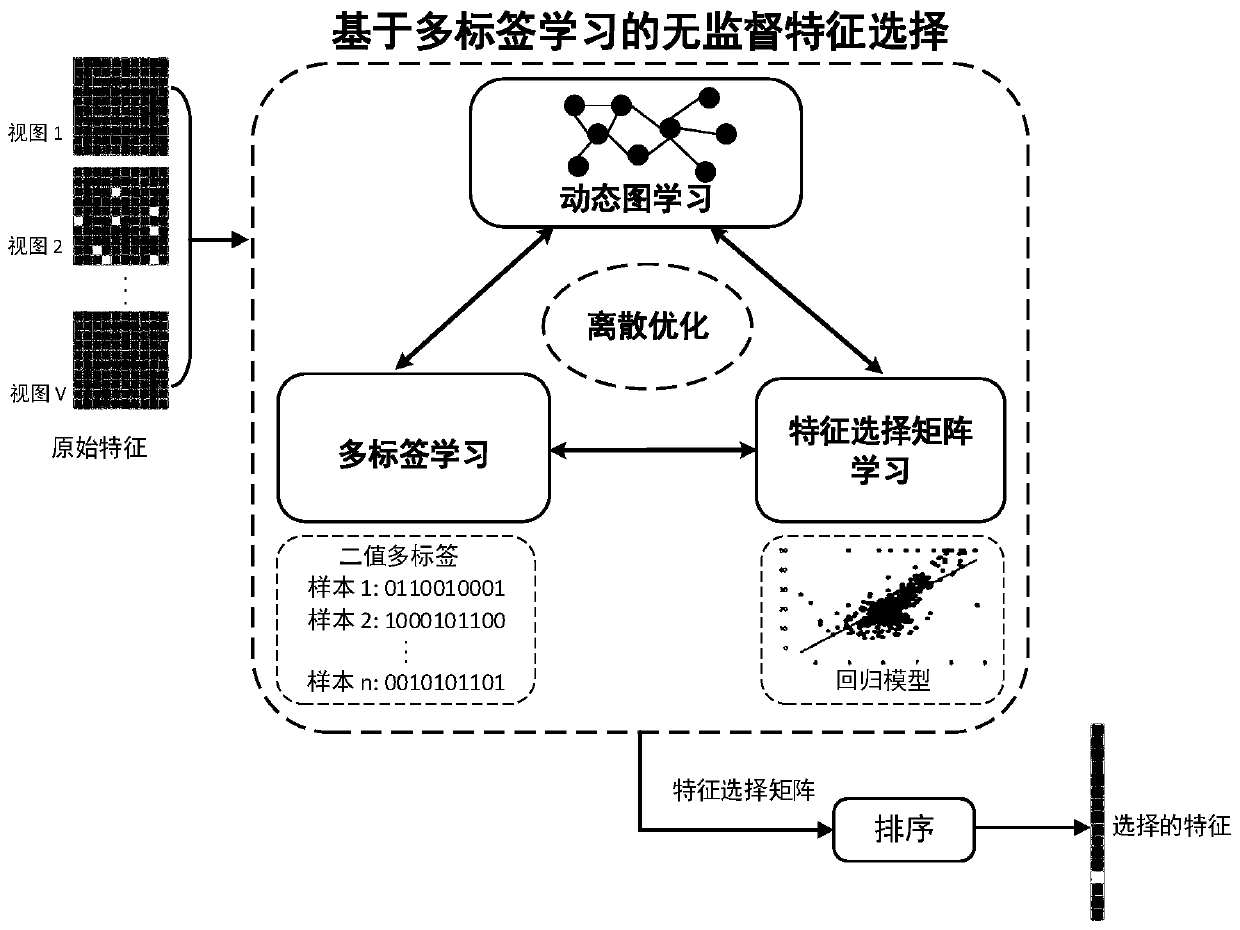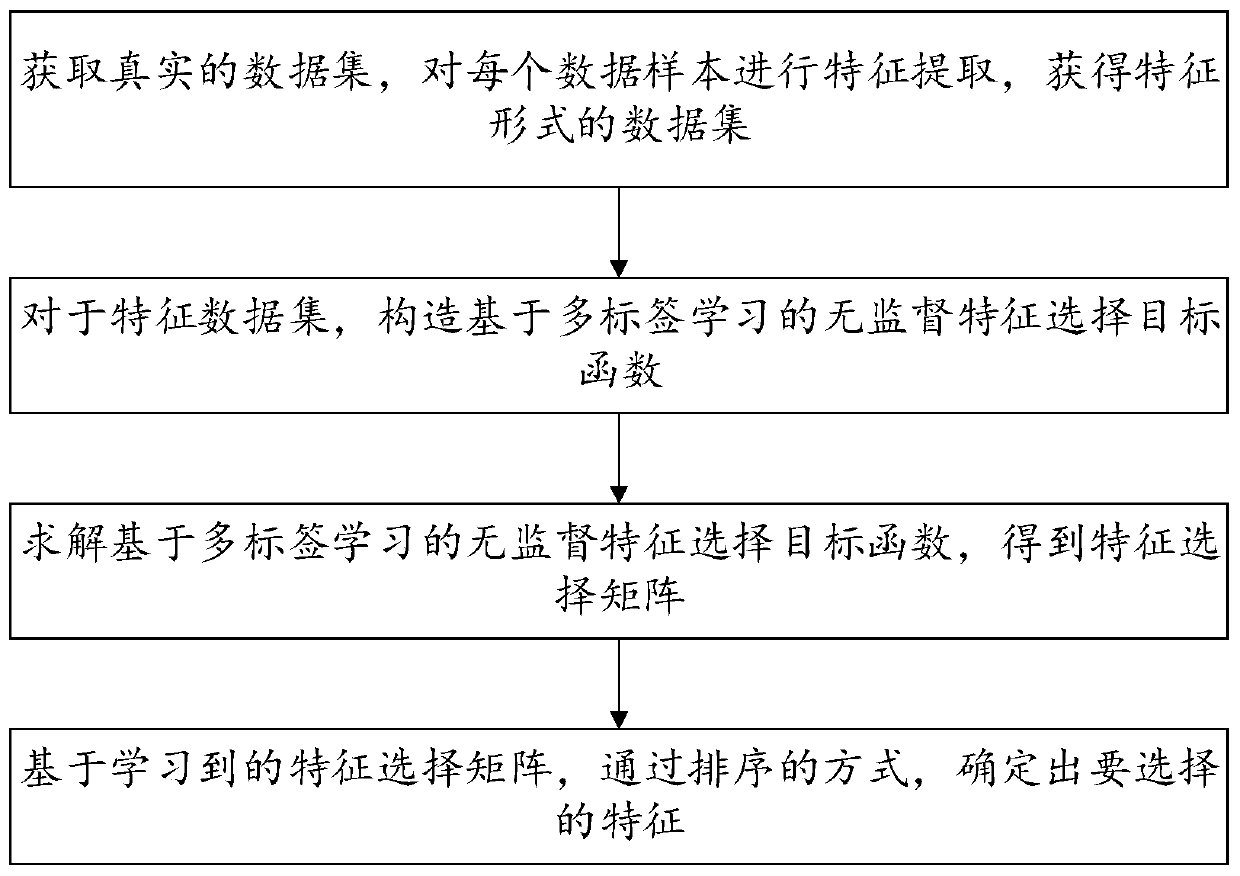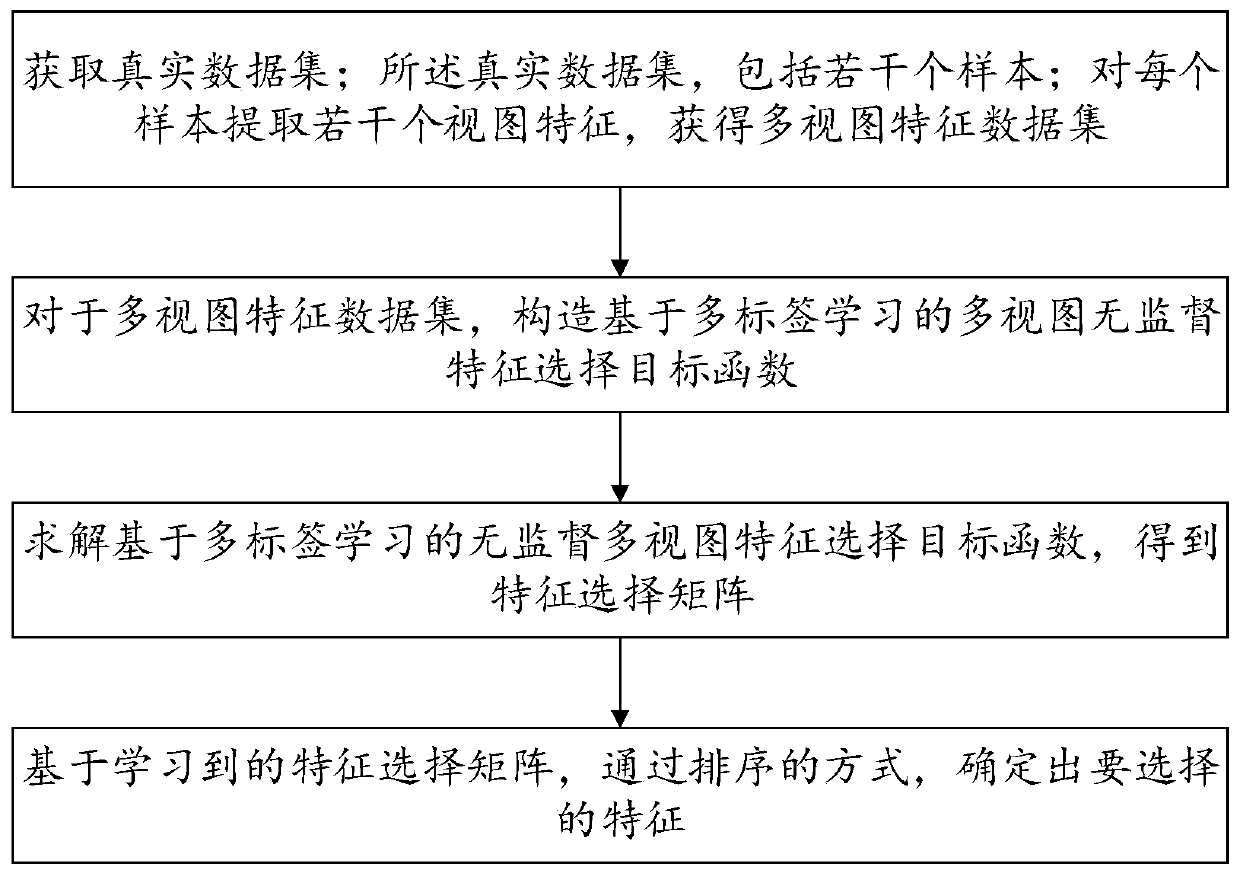Unsupervised feature selection method and system based on multi-label learning
A feature selection method and feature selection technology, applied in the direction of instruments, character and pattern recognition, computer components, etc., can solve problems such as no label guidance, low image quality, and lack of semantics
- Summary
- Abstract
- Description
- Claims
- Application Information
AI Technical Summary
Problems solved by technology
Method used
Image
Examples
Embodiment 1
[0048] The present disclosure provides an unsupervised feature selection method based on multi-label learning, including:
[0049] S1: Obtain a real data set, perform feature extraction on each data sample, and obtain a data set in the form of features;
[0050] S2: For feature datasets, construct an unsupervised feature selection objective function based on multi-label learning;
[0051] S3: Solve the unsupervised feature selection objective function based on multi-label learning to obtain the feature selection matrix;
[0052] S4: Based on the learned feature selection matrix, determine the features to be selected by sorting.
[0053] As one or more embodiments, the step S1 includes acquiring a feature data set X∈R d×n , where d is the feature dimension and n is the number of samples.
[0054] As one or more embodiments, the specific steps of the step S2 include:
[0055] The present disclosure proposes to learn binary multi-label and perform feature selection simultaneo...
Embodiment 2
[0120] Such as image 3 As shown, this example also extends the multi-label learning-based unsupervised feature selection method to the multi-view setting, providing an unsupervised multi-view feature selection method based on multi-label learning.
[0121] An unsupervised multi-view feature selection method based on multi-label learning, including:
[0122] S1: Obtain a real data set; the data set includes: several samples; extract several view features for each sample, and obtain a multi-view data set in the form of features;
[0123] S2: For the multi-view feature dataset, construct an unsupervised multi-view feature selection objective function based on multi-label learning;
[0124] S3: Solve the unsupervised multi-view feature selection objective function based on multi-label learning to obtain the feature selection matrix;
[0125] S4: Based on the learned feature selection matrix, determine the features to be selected by sorting.
[0126] As one or more embodiments,...
Embodiment 3
[0165] The present disclosure provides an unsupervised feature selection system based on multi-label learning, including:
[0166] The objective function construction module is used to perform feature extraction on each acquired data sample to obtain a feature data set, learn a binary multi-label matrix and a feature selection matrix for the feature data set, and construct an unsupervised feature selection target based on multi-label learning function;
[0167] A solution module, which is used to solve the unsupervised feature selection objective function based on multi-label learning by using a discrete optimization method based on the augmented Lagrange multiplier method, to obtain a feature selection matrix;
[0168] The selection module is used to sort the feature selection matrix to determine the selected target features.
PUM
 Login to View More
Login to View More Abstract
Description
Claims
Application Information
 Login to View More
Login to View More - R&D
- Intellectual Property
- Life Sciences
- Materials
- Tech Scout
- Unparalleled Data Quality
- Higher Quality Content
- 60% Fewer Hallucinations
Browse by: Latest US Patents, China's latest patents, Technical Efficacy Thesaurus, Application Domain, Technology Topic, Popular Technical Reports.
© 2025 PatSnap. All rights reserved.Legal|Privacy policy|Modern Slavery Act Transparency Statement|Sitemap|About US| Contact US: help@patsnap.com



